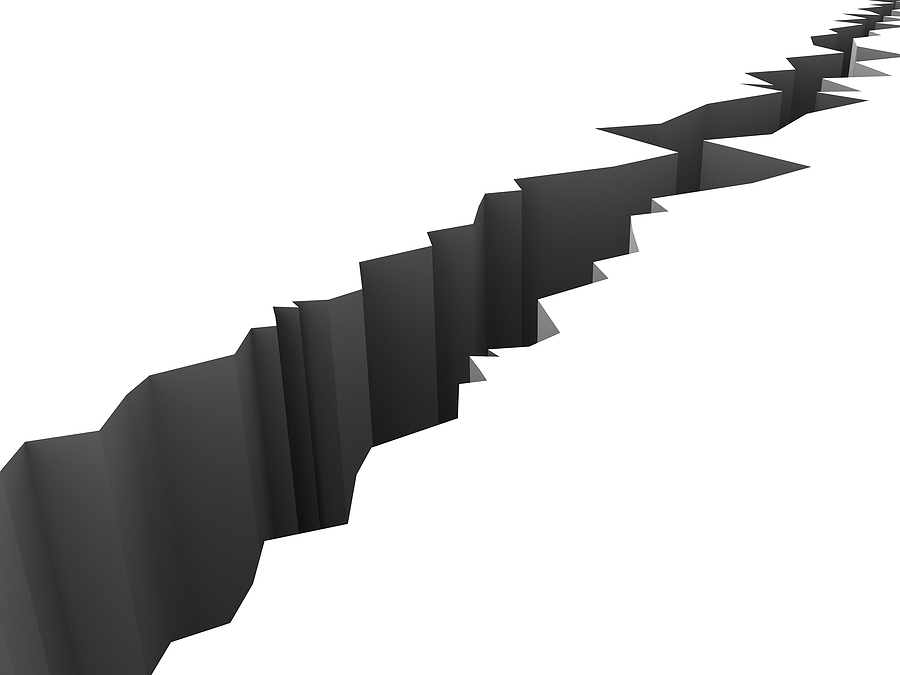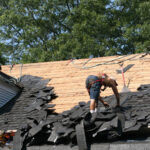Michael Korn is a popular person these days, which is perhaps not too surprising considering what he does for a living and where he lives. Korn is an insurance broker in earthquake-prone San Francisco.
“We’re pretty busy,” he said of the period since Japan’s devastating earthquake on March 11. “I’d say everybody is really still trying to figure out what the heck is going on,” said Korn, who is managing principal at Integro Insurance Brokers.
More than 28,000 people are dead or missing in Japan’s magnitude 9.0 earthquake and subsequent tsunami, and researchers estimate some 143,000 buildings were in some way damaged.
Depending on who you ask, the insurance industry may be on the hook for anywhere from $12 billion to $42 billion in claims — a fraction of the more than $160 billion capital insurance brokers say is available in the reinsurance sector, but a huge number nonetheless.
If only it had been a hurricane instead.
From Sacramento to Sendai, everyone is better prepared for big storms than earthquakes. Insurance companies have more data and more experience, customers have more and better coverage and the disaster researchers who support the industry have more science on their side.
While insurers can literally see a hurricane coming a mile away (and then some), every earthquake is an educated guess.
The sophisticated modeling systems the insurance industry uses to predict where disasters will happen and how much they will cost never factored in an earthquake the size of the one that hit northeast Japan. At most, the various programs suggested a magnitude-8.4 earthquake might hit that part of Japan at some point in the next few centuries.
But the quake did happen, and at magnitude 9 it was some five times or so more powerful than even the finest scientific minds in Japan thought possible.
And they weren’t the only ones caught off guard. Despite the fact that three of the six strongest earthquakes in history have struck since late 2004, relatively few people carry insurance for them and the industry has for the most part ignored them. The combination is, literally, a recipe for disaster.
“What is interesting is the fact that we’ve now had three of these earthquakes close to magnitude 9 in the space of seven years. That is sort of interesting. It doesn’t look like random behavior,” said Robert Muir-Wood, chief research officer of catastrophe modeling company RMS.
NO INSURANCE, NO PROBLEM
When it comes to earthquakes, the industry’s saving grace has been that consumers just aren’t paying attention — until now, that is. Earthquake insurance is so rare in San Francisco and other places where tectonic plates often slip that even insurers are shocked.
“Frankly all of these facts have been on the table for a long, long time,” said Jacob Rosengarten, chief risk officer for reinsurer XL Group. “It’s very human.”
Scientists say California is all but certain to suffer a severe earthquake in the next 30 years. It could be in the middle of the desert, and it could be under downtown Los Angeles. No one knows.
What is known is this — perhaps one in 10 California homeowners has earthquake insurance. The rest have nothing, even though California law requires anyone selling homeowners policies to also offer earthquake coverage.
“In California, the insurance industry is better prepared for the next earthquake than Californians, because for the most part they don’t cover it,” said Glenn Pomeroy, chief executive of the California Earthquake Authority (CEA).
After the 1994 Northridge earthquake, faced with the legal mandate to offer quake coverage if they wanted to offer property coverage, most insurers simply pulled out of the state. The California legislature responded by creating the CEA, which is publicly managed but privately funded by insurers who pay for the right to sell CEA policies to customers.
Of the few people in California who now have an earthquake policy, 70 percent get it from the CEA, paying huge premiums for the privilege and facing a 15 percent deductible if their home is actually lost in a quake.
“If anybody ought to be able to make earthquake insurance affordable, it’s us, and yet we still struggle because of the nature of the risk,” Pomeroy said.
The problem is even more acute in, of all places, Missouri. It occurs to few people today, but the state sits on the same fault as the one that caused the New Madrid earthquake in 1812. Were that temblor to happen now, it would cause an estimated $100 billion in insured losses.
In February the state identified eight at-risk regions, and found that in each case coverage had declined sharply as premiums in some instances doubled.
The disparity is a hot-button issue for John Huff, who is director of the Missouri Department of Insurance and also holds the insurance commissioner’s seat on the Financial Stability Oversight Council. That makes Huff one of the most important players in the ongoing debate about how insurance will be regulated in years to come.
He says all options are open — including some sort of regional compact or CEA-like partnership, following on discussions he is holding with insurance commissioners in neighboring states.
“It’s an issue we should not take off the table and we should not dismiss without discussing,” he said. “The amount of deductible on these products would put folks out of reach of having adequate coverage if an event occurred.”
The question is, if people cannot or do not buy coverage, what happens when the worst happens? In Japan and New Zealand, government reinsurance pools protect most homeowners from quake risk. In the United States, insurers say there is an assumption — the belief, right or not, that if a really bad disaster devastated a truly important region of the country, the U.S. government would somehow step in to help.
SHORT-HANDED SCIENCE
Financial assumptions are not the only problem, though — scientific assumptions are just as much of an issue for the industry, as Japan proves. Earthquake science is still catching up to the far-easier-to-pursue wind science.
Insurers simply do not focus on earthquakes the way they do on hurricanes. This is partly because by an accident of geography, richer, more heavily-insured parts of the world are hit far less often by earthquakes than by windstorms.
“You have greater competence in the response for hurricanes because you have a much greater frequency,” said Tom Larsen, the product architect for EQECAT, another of the major risk modeling companies.
“The earthquakes, now the preparations may be as extensive, but we’re not seeing as frequent tests. There’s a lot more uncertainty on (the question of) is everything going to work as it’s supposed to.”
In many ways the problem makes sense. It is easy to see a hurricane coming, days before it makes landfall, and that offers plenty of time to make the usual preparations. Not so with earthquakes, and in many cases with tsunamis as well.
“No event is the same, every single event whether it is large or small has its own unique characteristics,” said Jay Guin, senior vice president of research and modeling for AIR Worldwide, the other major risk modeler.
“I think most people would agree that earthquakes have more uncertainty involved in it. With hurricanes you see them physically … an earthquake happens with no forewarning so that adds to the psychological effect.”
One consequence of earthquakes’ relative rarity is that the models used to predict their impact on insurers are less developed, giving the industry less visibility over their final outcome. This greater uncertainty, unsurprisingly, makes insurers more wary of earthquake risk.
“We believe we are less exposed to earthquakes than wind, and that’s partly driven by the fact that there’s more modeling uncertainty,” said Paul Martin, head of enterprise risk management at Bermuda-based Catlin, one of the biggest insurers operating in the Lloyd’s of London market.
“Quake models have been less tested. This is a massive test for the Japanese quake model. The modeling companies will undoubtedly learn a lot from this.”
There is also a mismatch with earthquakes that keeps them out of the same focus as hurricanes — very often the worst ones happen in poorer countries, remote from the center of the insurance universe, where human tragedy does not equate to financial disaster.
Witness Haiti in 2010, one of the worst disasters in human history by any estimation, but little more than a blip for underwriters. Iran, Pakistan and China have also been hit hard by quakes in the past decade, without much impact on insurers.
Some question whether there is any way to predict if not when a quake will happen, then at least roughly where. There is a theory of “clustering” that suggests large earthquakes somehow trigger each other, so that all the major temblors that happened in the last 15 months could be somehow related.
Ask any risk modeler about the theory and they will, after a considered pause, describe it as “interesting.” Nothing more, though.
Recent research throws cold water on the theory: a late-March paper in the journal Nature Geoscience said there was no evidence of anything more than a regional triggering effect after a major quake.
(Editing by Claudia Parsons and Jim Impoco)
Part II of this article will appear in tomorrow’s Insurance Journal
By Ben Berkowitz and Myles Neligan
Topics Catastrophe California Carriers Hurricane Market
Was this article valuable?
Here are more articles you may enjoy.



 Viewpoint: Artificial Intelligence Is Rewriting the Rules for Commercial Lines
Viewpoint: Artificial Intelligence Is Rewriting the Rules for Commercial Lines  NTSB Unclear Who Was at Controls in Jet Crash That Killed Biffle and 6 Others
NTSB Unclear Who Was at Controls in Jet Crash That Killed Biffle and 6 Others  ‘Door Knocker’ Roofers Were Everywhere. NC Farm Bureau Saw an Opportunity
‘Door Knocker’ Roofers Were Everywhere. NC Farm Bureau Saw an Opportunity  Waymos Froze, Blocked Traffic During San Francisco Power Outage
Waymos Froze, Blocked Traffic During San Francisco Power Outage 

